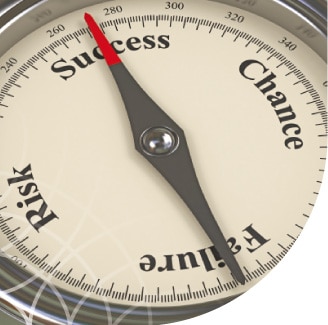Money Management, Performance & A Secret
Did you know you could have a 50% accuracy ratio for your trading, always have a 2R profit target, and still lose money? Its true, (although its a low probability), but remains true nonetheless. How? Because of two key factors: % account risked and your risk of ruin ratio. At a bare minimum, you have to understand 4 things about your trading to know mathematically if you will make money.
What are those 4 things? That is what this forex money management plan article is going to cover in detail. I will begin by discussing what these 4 things are, and how not knowing them will hurt your account. Then I will describe the risk of ruin formula and why its essential for your trading performance. I will end by sharing a forex money management secret that will impact how you think about money management and risk.
The 4 Things You Need To Know
Any article discussing forex money management plans and performance without discussing risk of ruin is incomplete at best and detrimental to your account at worst
Why?
Because at a bare minimum, you need to know 4 things about your trading to know if you will make money or not. They are the following;
1) Risk to Reward Ratio
2) Accuracy
3) % Risked Per Trade
4) Your Risk of Ruin
Simply put, you could be trading a 1:2 reward to risk ratio, and still lose money. You could know #1 along with your accuracy, and still lose money. You could know your % risked per trade and still lose money. But if you know those three + #4, you can mathematically know whether you will make or lose money.
How?
The Risk of Ruin Formula
What is the Risk of Ruin formula, how does it apply to my trading performance?
The risk of ruin formula is designed to communicate statistically if you will make or lose money trading. You can mathematically know for a fact if you will make, or lose money by knowing your risk of ruin. But you cannot calculate the risk of ruin formula without three key pieces of data. They are:
1) Risk to Reward Ratio
2) Accuracy
3) % Risked Per Trade
Combined together, these above will give you your risk of ruin (ROR). The ROR is a number representing the % chance you will ‘ruin’ your account, e.g. blow it up. Not a pleasant thought, but a highly useful piece of data and essential for your success.
What you want is a 0% ROR (risk of ruin) or a 0% chance of blowing up your account. The inverse of this is you mathematically will make money.
Now remember the first thing I said about how a trader with 50% accuracy always having a 2R reward could still lose money? Let me share why via two risk or ruin tables below.
Trader A Risking 10% of Account Equity ROR Table
| Win Ratio % | Payoff Ratio 2:1 (2R Profit) |
| Win Ratio 40% | 14.2 |
| Win Ratio 45% | 3.41 |
| Win Ratio 50% | .813 |
| Win Ratio 55% | .187 |
| Win Ratio 60% | .0401 |
| Win Ratio 65% | 0 |
Looking at the chart above, by risking 10% of your account equity per trade, having a win ratio of 50% and a payoff ratio of 2:1 (2R per trade), you have a .813% chance of ruining your entire account. Although this is a low probability, it is still a possibility. You actually have to be 65% accurate to mathematically ‘know’ you will make money.
Now lets take the same win and payoff ratios (50% / 2R), reduce the risk per trade to 5% of your total equity, and see how the numbers change.
Trader B Risking 5% of Account Equity ROR Table
| Win Ratio % | Payoff Ratio 2:1 (2R Profit) |
| Win Ratio 40% | 2.03 |
| Win Ratio 45% | .116 |
| Win Ratio 50% | 0 |
| Win Ratio 55% | 0 |
| Win Ratio 60% | 0 |
| Win Ratio 65% | 0 |
In this second table, only those with a 40-45% accuracy have a mathematical chance of losing money. But those at 50% accuracy have a zero % chance of losing money, thus mathematically will make money. What is the key difference? The % risked per trade. This is why it is absolutely critical to your money management strategy to use a % equity risk model, not a meaningless ‘dollar risked per trade’.
Also notice how risking 5% per trade instead of 10% drastically changed the accuracy levels needed to make money? Trader A needed a 65% accuracy level to be certain they could make money, while Trader B only needed a 50% accuracy level – a 10% difference!
It should also communicate an essential point;
Any forex money management strategy article or website talking about trading without mentioning the above, is giving you totally incomplete information about money management which could kill your account. In essence, you could be trading blind to the numbers which hugely determine your success or failure in trading.
A critical piece of information? Absolutely. Something you’d want to know? I’d certainly hope so.
One Last Point (A Secret About Money Management)
There is one thing almost never talked about when discussing trading money management strategies. It is a huge point why working with a % equity model is far superior to ‘dollar risked per trade’. And it has to do with your mind.
If you are setting the risk per trade based on a ‘dollar value’, that dollar value actually means more to your mind (and thus emotions) than an ‘neutral’ % of your account. Why? Because you spend money in terms of dollars (or euros, or whatever your local currency is), not %’s of your account.
So if you are making a trade, and thinking ‘Oh, I’m going to risk $5,000 on this trade‘, that very thought of ‘$5,000’ can (and most likely will) conjure up a host thoughts about rent, bills, car payments, or a wave of other things.
These thoughts are far more likely to engage any fears you have about the ‘dollars you are risking per trade‘ than a neutral 1 or 2% which has ‘no reference‘ to how much you spend, may need, or what it could buy. In essence, there is no ‘trigger‘ in your mind about % risked per trade, but there certainly is about the ‘dollars risked per trade.’
By shifting your trading money management strategy and trading mindset towards a % equity model, your mind will be more focused on the actual trade. This is opposed to dealing with the thoughts ‘Oh, that $5,000 is a lot of money to me. I’m about to risk $5,000 which could pay for my rent, my mortgage, or my debts‘.
This mind trick actually helps to reduce the emotional triggers when trading, thus leaving your cognitive mind less burdened with thoughts of the money, and more focused on the trade. This is a huge reason why a % equity model is far superior from a trading mindset perspective than a ‘dollar risked per trade’ model. Food for thought, but I hope this clarifies the huge advantages and information available when thinking about forex money management in terms of a % equity of your account.



Enjoyed the article, Chris. Thank you for writing and sharing.
Hello The Blade,
Glad you enjoyed it mate.
Kind Regards,
Chris Capre
Great^^
Hello Wanwisa,
Glad you liked it.
Kind Regards,
Chris Capre
nice artcle but what formula are you using to get the ROR,I’m trying to consider a situation where the R is 1:1.5 with an accuracy rate of say 65%.i understood most part of the article but confused on the formula or how you came up with a ROR of 0.813.Thank you
Hello Ishmael,
If you click on the link to the risk of ruin formula, it will take you to an article that has the base formula.
Hope this helps.
Kind Regards,
Chris Capre
i love the way you totally crush your competition! excellent article!
Hello Alex,
Someone has to do it.
Kind Regards,
Chris Capre
Instant classic! You rarely, if ever, hear anyone talk about the risk of ruin in a way that is quantified. the way Chris does.
Chris, are the % RoR. calculations based on probabilities of how many losses in a row it’s possible to experience based on the win rate? For example, I read somewhere that when flipping a coin that after a very high number of flips you can’t get more than 7 consecutive heads/tails. If this is how Risk of ruin is calculated it would be interesting to know how many total trades are considered in the calculation; at an extreme, somebody who uses a robot to scalp on the 1 minute time frame might do 100 trades a day and therefore 20,000 trades a year so if the RoR calculation is based on a 1,000 trades then such a robot would probably stand an increased risk of ruin.
Hello Steve,
I’f I am correct, a min. of 10K instantiations were considered.
Kind Regards,
Chris Capre
Would mind sharing the formula to calculate the Risk of Ruin?
Hello Keen246,
If you click on the ‘risk of ruin’ link in the article, it will take you to the article with the formula.
Hope this helps.
Kind Regards,
Chris Capre
This is brilliant, thanks Chris! I guess a more conservative way is to also base your position size on the mathematical likelihood of a draw down of R, therefore limiting any potential losing streak to no more than say 10-15%? Great article though, thanks alot
Good point DV34 – I’d be interested to know how maximum losing streak is calculated when the following are known:- Winning % , R:R, and total number of trades. Then I’d be able to calculate max theoretical drawdown. It’s only theoretical, because as Chris has written about before, our trading performance varies enormously according to our psychological state – I’m sure a mathematician could factor that in as well 🙂
Man, was one of those persons ‘duped’ by the ‘authority’ on price action, who really Isn’t much of an authority at all, but more marketer.
Definitely u have changed my perspective on risk management and this risk of ruin. Will never look at using dollar risk method again math shows how stupid the method is
Thank you Chris for shedding light on this as most people new like myself were likely confused and tricked by the other fake trading mentor
Carlos P